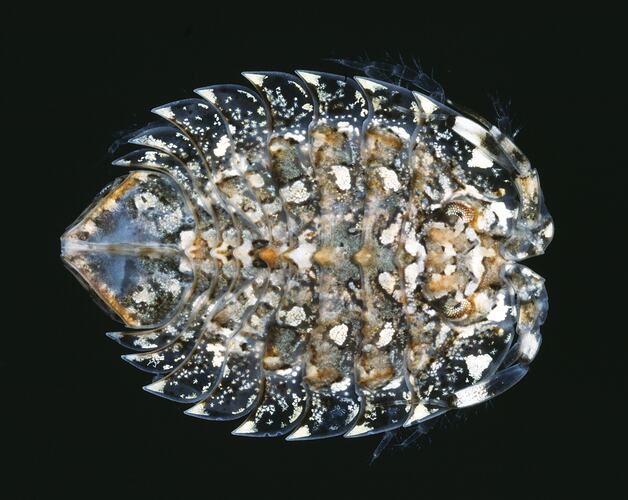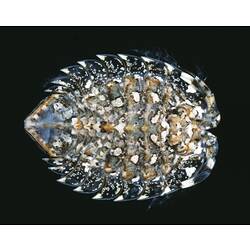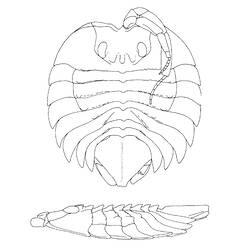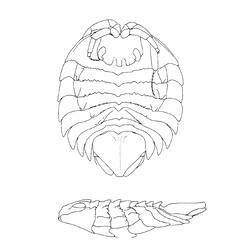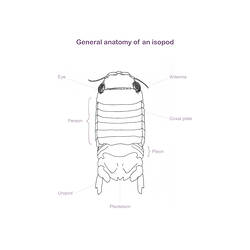General Description
Body very flat and round, head inset into the first body segment with a pair of kidney shaped eyes on top. Body segments with strong ridge of midlateral crenulations. The first legs are a pair of solid claws. Up to 9 mm long.
Biology
Sand skaters use their discoid shape and camouflage to swim and walk about invisibly on the surface of sand in marine environments. They feed on the organic matter found in the sand. They are sometimes likened to extinct fossil trilobites but the resemblance of course is no more than superficial. Deep water and some Antarctic relatives grow to 10 cm long.
Distribution
Southern temperate oceans, including south-eastern Australia.
Habitat
Subtidal sand and mud, 0-40 m depth.
More Information
-
Animal Type
-
Animal SubType
-
Brief Id
Body disc shaped, flattened, with enlarged subchelate first legs; eyes kidney shaped.
-
Maximum Size
9 mm
-
Habitats
-
Diet
Organic matter
-
Diet Categories
Organic matter
-
Endemicity
-
Commercial
No
-
Conservation Statuses
DSE Advisory List: Not listed, EPBC Act 1999: Not listed, IUCN Red List: Not listed
-
Depths
Shore (0-1 m), Shallow (1-30 m), Deep ( > 30 m)
-
Water Column Locations
On or near seafloor
-
Taxon Name
-
Scientific Author
Poore, 1987
-
Common Name
Sand Skater
-
Phylum
-
Subphylum
-
Superclass
-
Class
-
Subclass
-
Superorder
-
Order
-
Suborder
-
Superfamily
-
Family
-
Genus
-
Species Name
delaria
